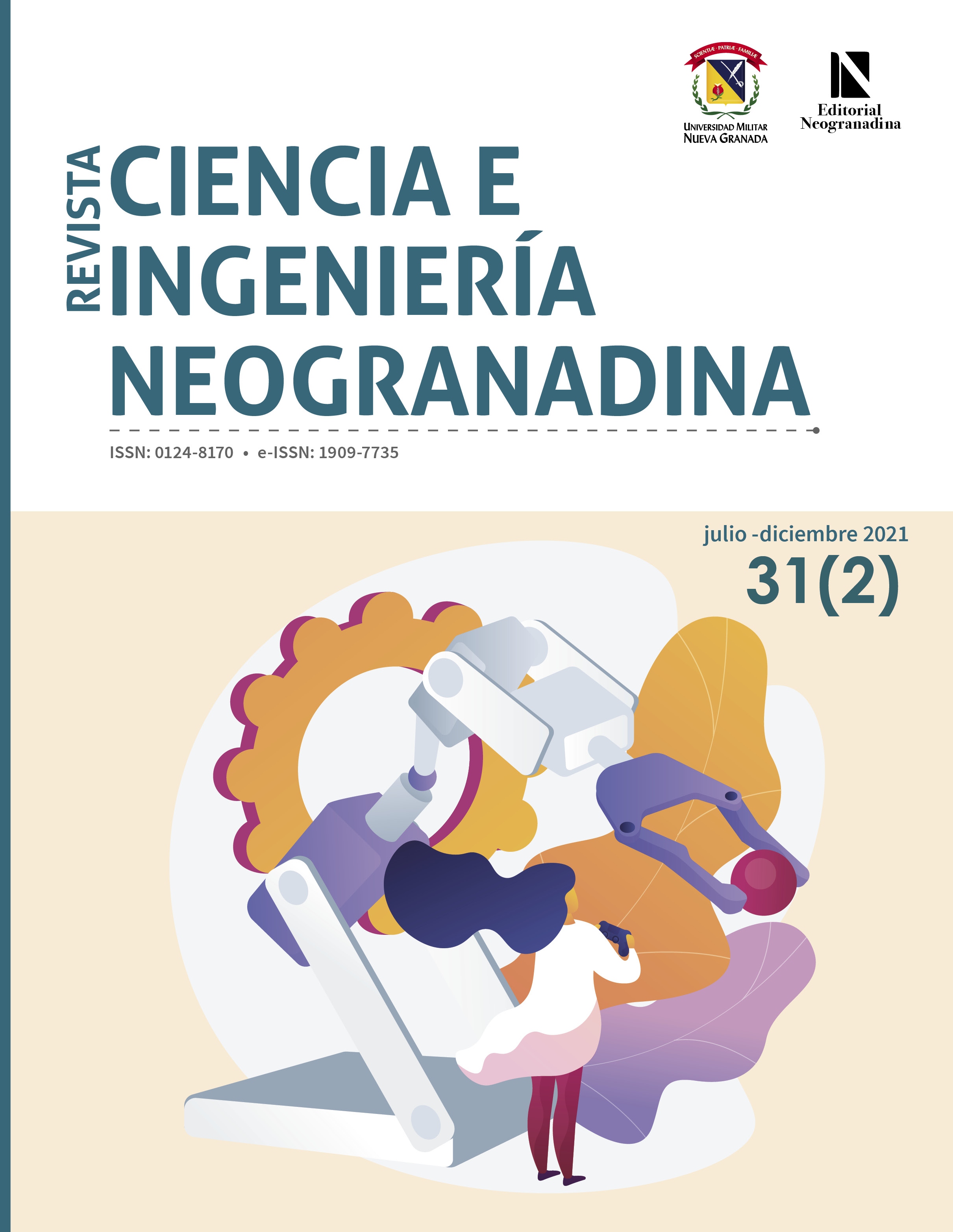Quantifying the Effect of LiDAR Data Density on DEM Quality
Abstract
LiDAR sensors capture three-dimensional point clouds with high accuracy and density; since they are regularly obtained, interpolation methods are required to generate a regular grid. Given the large size of its files, processing becomes a challenge for researchers with not very powerful computer stations. This work aims to balance the sampling density and the volume of data, preserving the sensitivity of representation of complex topographic shapes as a function of three surface descriptors: slope, curvature, and roughness. This study explores the effect of the density of LiDAR data on the accuracy of the Digital Elevation Model (DEM), using a ground point cloud of 32 million measurements obtained from a LiDAR flight over a complex topographic area of 156 ha. Digital elevation models with different relative densities to the total point dataset were produced (100, 75, 50, 25, 10, and 1 % and at different grid sizes 23, 27, 33, 46, 73, and 230cm). Accuracy was evaluated using the Inverse Distance Weighted and Kriging interpolation algorithms, obtaining 72 surfaces from which their error statistics were calculated: root mean square error, mean absolute error, mean square error, and prediction effectiveness index; these were used to evaluate the quality of the results in contrast with validation data corresponding to 10 % of the original sample. The results indicated that Kriging was the most efficient algorithm, reducing data to 1 % without statistically significant differences with the original dataset, and curvature was the morphometric parameter with the most significant negative impact on interpolation accuracy.
Downloads
References
A. N. V. Graham et al., "Effect of ground surface interpolation methods on the accuracy of forest attribute modelling using unmanned aerial systems-based digital aerial photogrammetry systems-based digital aerial photogrammetry," Int. J. Remote Sens., vol. 41, no. 9, pp. 1-20, 2019, doi: https://doi.org/10.1080/01431161.2019.1694722
L. R. Jarron, N. C. Coops, W. H. MacKenzie, P. Tompalski, and P. Dykstra, "Detection of sub-canopy forest structure using airborne LiDAR," Remote Sens. Environ., vol. 244, no. 111770, 2020, doi: https://doi.org/10.1016/j.rse.2020.111770
Y. Megahed, A. Shaker, and W. Y. Yan, "Fusion of airborne lidar point clouds and aerial images for heterogeneous land-use urban mapping," Remote Sens., vol. 13, no. 4, pp. 1-36, 2021, doi: https://doi.org/10.3390/rs13040814
S. Veeck, F. F. da Costa, D. L. Correia Lima, A. R. da Paz, and D. G. Allasia Piccilli, "Scale dynamics of the HIDROPIXEL high-resolution dem-based distributed hydrologic modeling approach," Environ. Model. Softw., vol. 127, p. 104695, 2020, doi: https://doi.org/10.1016/j.envsoft.2020.104695
E. Hutanu, A. Mihu-Pintilie, A. Urzica, L. E. Paveluc, C. C. Stoleriu, and A. Grozavu, "Using 1D HEC-RAS modeling and LiDAR data to improve flood hazard maps accuracy: A case study from Jijia Floodplain (NE Romania)," Water (Switzerland), vol. 12, no. 6, pp. 1-21, 2020, doi: https://doi.org/10.3390/w12061624
J. Fan et al., "Monitoring and Analyzing Mountain Glacier Surface Movement Using SAR Data and a Terrestrial Laser Scanner: A Case Study of the Himalayas North Slope Glacier Area," Remote Sens., vol. 11, no. 6, p. 625, 2019, doi: https://doi.org/10.3390/rs11060625
M. Avian et al., "The status of earth observation techniques in monitoring high mountain environments at the example of pasterze glacier, Austria: Data, methods, accuracies, processes, and scales," Remote Sens., vol. 12, no. 8, 2020, doi: https://doi.org/10.3390/rs12081251
D. Xu, H. Wang, W. Xu, Z. Luan, and X. Xu, "LiDAR applications to estimate forest biomass at individual tree scale: Opportunities, challenges and future perspectives," Forests, vol. 12, no. 5, pp. 1-19, 2021, doi: https://doi.org/10.3390/f12050550
P. Tabrizian, P. K. Baran, D. Van Berkel, H. Mitasova, and R. Meentemeyer, "Modeling restorative potential of urban environments by coupling viewscape analysis of lidar data with experiments in immersive virtual environments," Landsc. Urban Plan., vol. 195, p. 103704, 2020, doi: https://doi.org/10.1016/j.landurbplan.2019.103704
E. K. Dey, F. Tarsha Kurdi, M. Awrangjeb, and B. Stantic, "Effective selection of variable point neighbourhood for feature point extraction from aerial building point cloud data," Remote Sens., vol. 13, no. 8, 2021, doi: https://doi.org/10.3390/rs13081520
W. Cao, G. Sofia, and P. Tarolli, "Geomorphometric characterisation of natural and anthropogenic land covers," Prog. Earth Planet. Sci., vol. 7, no. 2, 2020, doi: https://doi.org/10.1186/s40645-019-0314-x
X. Liu, Z. Zhang, J. Peterson, and S. Chandra, "The effect of LiDAR data density on dem accuracy," MODSIM 2007 - Int. Congr. Model. Simul. - Land, Water Environ. Manag. Integr. Syst. Sustain. Proc., pp. 1363-1369, 2007.
Y. Duan, C. Yang, H. Chen, W. Yan, and H. Li, "Low-complexity point cloud denoising for LiDAR by PCA-based dimension reduction," Opt. Commun., vol. 482, no. September 2020, p. 126567, 2021, doi: https://doi.org/10.1016/j.optcom.2020.126567
M. E. Hodgson and P. Bresnahan, "Accuracy of airborne lidar-derived elevation: Empirical assessment and error budget," Photogramm. Eng. Remote Sensing, vol. 70, no. 3, pp. 331-339, 2004, doi: https://doi.org/10.14358/PERS.70.3.331
E. S. Anderson, J. A. Thompson, D. A. Crouse, and R. E. Austin, "Horizontal resolution and data density effects on remotely sensed LIDAR-based dem," Geoderma, vol. 132, no. 3-4, pp. 406-415, 2006, doi: https://doi.org/10.1016/j.geoderma.2005.06.004
M. E. Hodgson et al., "An Evaluation of Lidar-derived Elevation and Terrain Slope in Leaf-off Conditions," Photogramm. Eng. Remote Sens., vol. 71, no. 7, pp. 817-823, 2005, doi: https://doi.org/10.14358/PERS.71.7.817
P. F. Fisher and N. J. Tate, "Causes and consequences of error in digital elevation models," Prog. Phys. Geogr., vol. 30, no. 4, pp. 467-489, 2006, doi: https://doi.org/10.1191/0309133306pp492ra
T. Hengl, "Finding the right pixel size," Comput. Geosci., vol. 32, no. 9, pp. 1283-1298, 2006, doi: https://doi.org/10.1016/j.cageo.2005.11.008
Y. Hu, "Automated Extraction of Digital Terrain Models, Roads and Buildings Using Airborne Lidar DataAutomated Extraction of Digital Terrain Models, Roads and Buildings Using Airborne Lidar Data," University of Calgary, 2003.
W. R. Tobler, "Lattice Tuning," Geogr. Anal., vol. 11, no. 1, pp. 36-44, 1979, doi: https://doi.org/10.1111/j.1538-4632.1979.tb00671.x
W. R. Tobler, "A Computer Movie Simulating Urban Growth in the Detroit Region," Econ. Geogr., vol. 46, p. 234, 1970, doi: https://doi.org/10.2307/143141
R. Giraldo, Introducción a la Geoestadística. Teoría y Aplicación. Santa Fe de Bogotá: Universidad Nacional de Colombia, 2011.
A. J. A. M. Temme, G. B. M. Heuvelink, J. M. Schoorl, and L. Claessens, "Geostatistical simulation and error propagation in geomorphometry," in Developments in Soil Science, vol. 33, Elsevier, 2009, pp. 121-140. doi: https://doi.org/10.1016/S0166-2481(08)00005-6
P. K. Srivastava, P. C. Pandey, G. P. Petropoulos, N. N. Kourgialas, V. Pandey, and U. Singh, "GIS and remote sensing aided information for soil moisture estimation: A comparative study of interpolation techniques," Resources, vol. 8, no. 2, p. 70, 2019, doi: https://doi.org/10.3390/resources8020070
M. Voltz and R. Webster, "A comparison of kriging, cubic splines and classification for predicting soil properties from sample information," J. Soil Sci., vol. 41, pp. 473-490, 1990, doi: https://doi.org/10.1111/j.1365-2389.1990.tb00080.x
C. A. Gotway, R. B. Ferguson, G. W. Hergert, and T. A. Peterson, "Comparison of Kriging and Inverse-Distance Methods for Mapping Soil Parameters," Soil Sci. Soc. Am., vol. 60, no. 4, pp. 1237-1247, 1996, doi: https://doi.org/10.2136/sssaj1996.03615995006000040040x
P. W. Bogaart and P. A. Troch, "Curvature distribution within hillslopes and catchments and its effect on the hydrological response," Hydrol. Earth Syst. Sci., vol. 10, no. 6, pp. 925-936, 2006, doi: https://doi.org/10.5194/hess-10-925-2006
H. Taud and J.-F. Parrot, "Measurement of dem roughness using the local fractal dimension," Géomorphologie Reli. Process. Environ., vol. 11, no. 4, pp. 327-338, 2005, doi: https://doi.org/10.4000/geomorphologie.622
igac. Instituto Geográfico Agustín Codazzi, Estudio general de suelos y zonificación de tierras de los departamentos de Caqueta y Guaviare. Bogotá, D.C., Colombia, 2009.
R. Dikau, "The application of a digital relief model to landform analysis in geomorphology," in Three dimensional applications in geographical information systems, J. Raper, Ed. London; New York; Philadelphia: Taylor & Francis, 1989, p. 189.
S. J. Riley, S. D. DeGloria, and R. Elliot, "A Terrain Ruggedness Index that Qauntifies Topographic Heterogeneity," Intermt. J. Sci., vol. 5, no. 1-4, pp. 23-27, 1999.
G. Babish, "Environment Canada Geostatistics Without Tears," pp. 1-56, 2000.
X. Liu, H. Hu, P. Hu, S. Francisco, E. Science, and P. S. Thenkabail, "remote sensing," Remote Sens., vol. 7, no. 6, pp. 7062-7079, 2015, doi: https://doi.org/10.3390/rs70607062
J. L. Mesa-Mingorance and F. J. Ariza-López, "Accuracy assessment of digital elevation models (dems): A critical review of practices of the past three decades," Remote Sens., vol. 12, no. 16, p. 2630, 2020, doi: https://doi.org/10.3390/rs12162630
A. Zhou, Y. Chen, J. P. Wilson, H. Su, Z. Xiong, and Q. Cheng, "An Enhanced Double-Filter Deep Residual Neural Network for Generating Super Resolution dems," Remote Sens., vol. 13, no. 16, p. 3089, 2021, doi: https://doi.org/10.3390/rs13163089
D. Godone and G. Garnero, "The role of morphometric parameters in Digital Terrain Models interpolation accuracy : a case study," Eur. J. Remote Sens., vol. 46, no. 1, pp. 198-214, 2013, doi: https://doi.org/10.5721/EuJRS20134611
F. J. Aguilar, F. Agüera, M. A. Aguilar, and F. Carvajal, "Effects of terrain morphology, sampling density, and interpolation methods on grid dem accuracy," Photogramm. Eng. Remote Sensing, vol. 71, no. 7, pp. 805-816, 2005, doi: https://doi.org/10.14358/PERS.71.7.805












